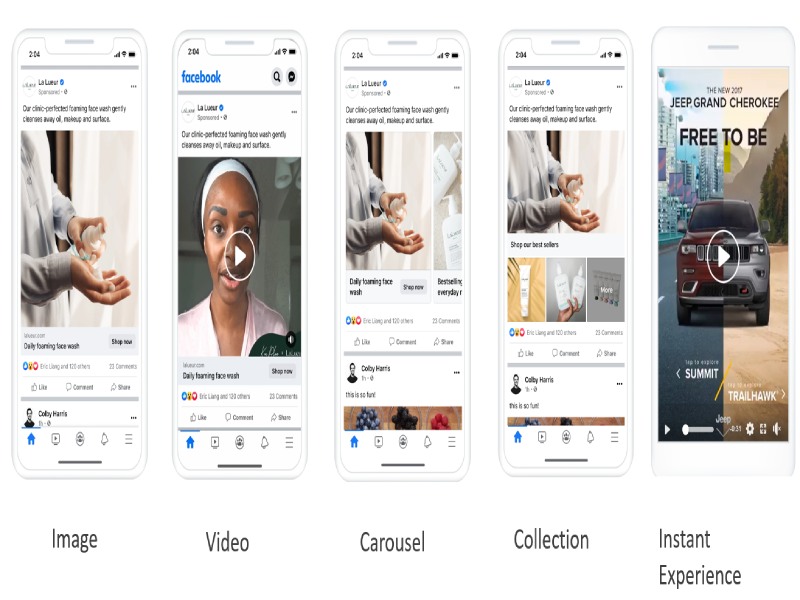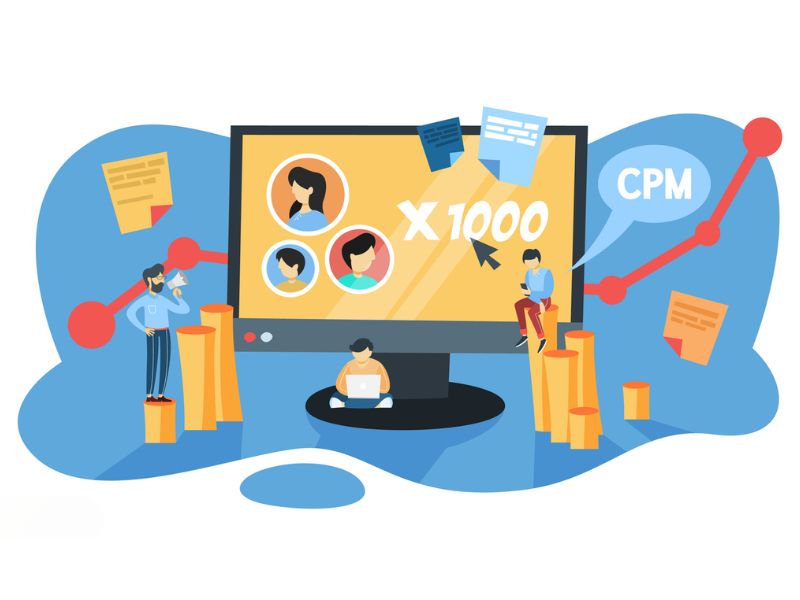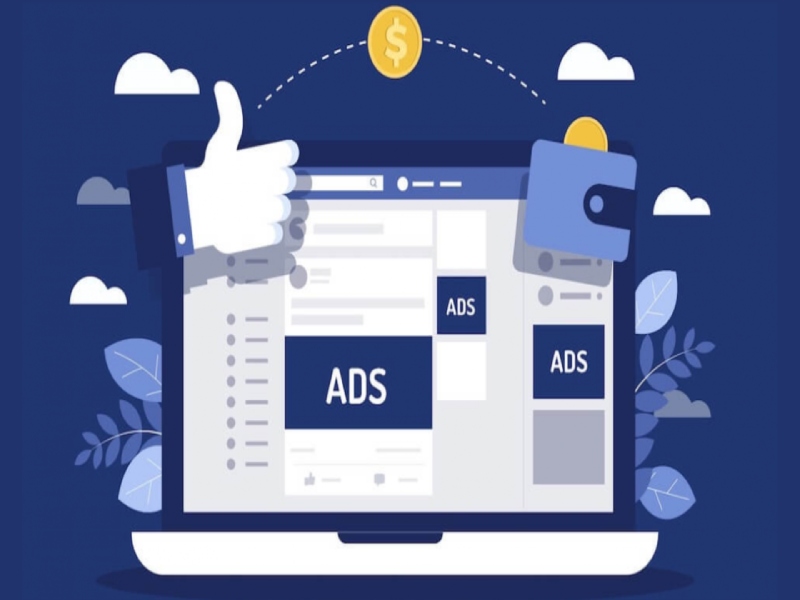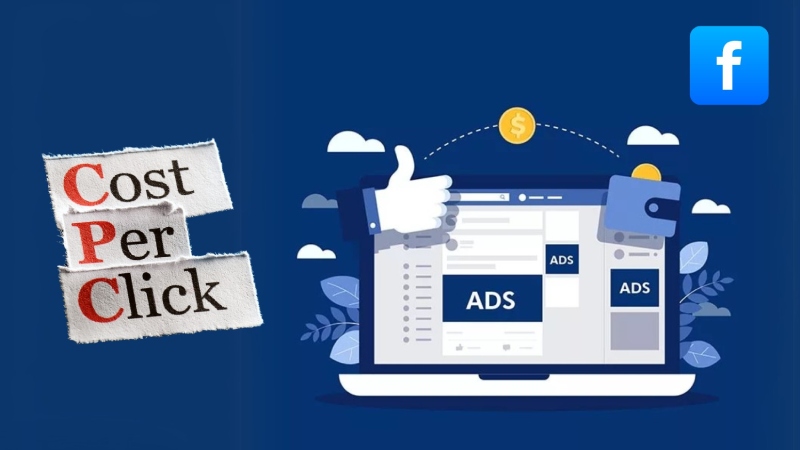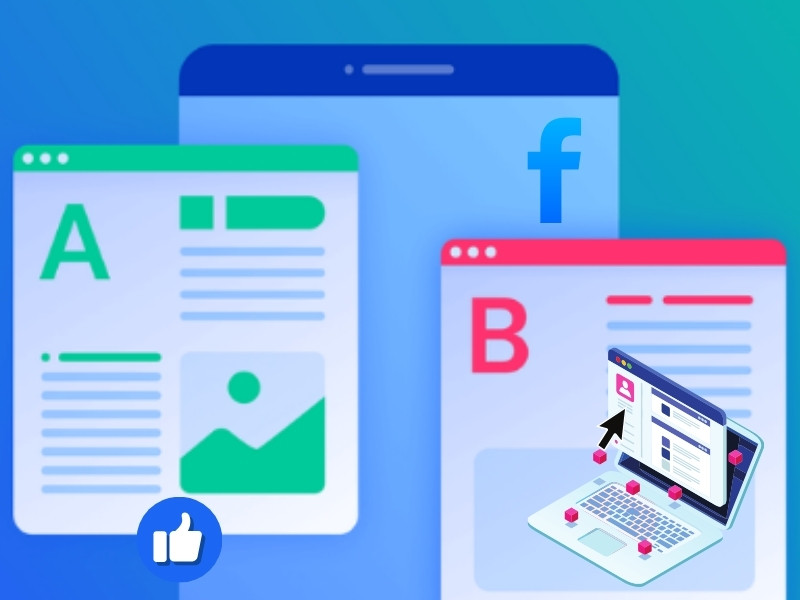Accurate Facebook advertising cost calculations can help you optimize your budget effectively. Using the Facebook CPC Calculator, you can predict how much you’ll need to spend per click. This guide will walk you through how to calculate CPC for Facebook ads, use the tool, and optimize your advertising campaigns for better results.
Facebook Ad Cost Formula: How to Calculate Your CPC
To determine the cost per click (CPC) of your Facebook advertisements, use the formula:
CPC = Total Ad Spend ÷ Number of Clicks
Example: If you spend $100 on an ad campaign and receive 1,000 clicks, your CPC is $100 ÷ 1,000 = $0.10 per click.
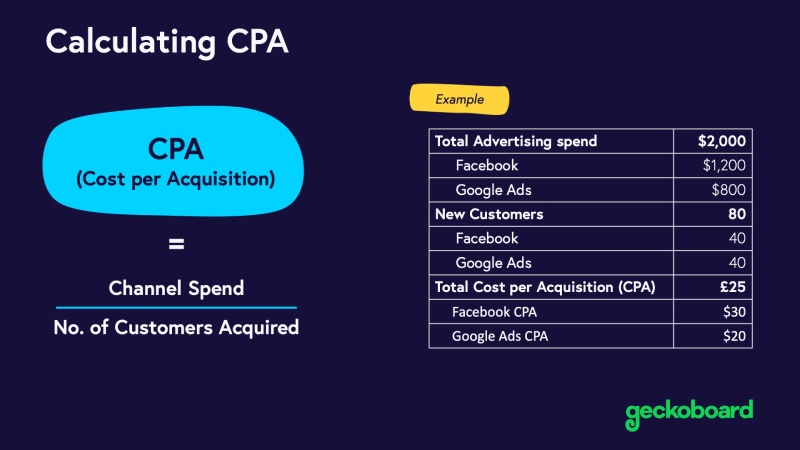
Several factors influence the CPC calculation for Facebook ads, determining how much you pay per click.
- Industry: Highly competitive sectors like finance and insurance often experience higher CPCs. On the other hand, industries with less competition (like niche hobbies or local businesses) usually have lower CPCs, as fewer advertisers are bidding for clicks.
- Audience targeting: The specificity and size of your target audience significantly influence CPC. A broad target can reduce ad effectiveness and increase CPC, while a highly targeted audience may boost conversion and engagement, even if it’s more expensive.
- Ad quality and relevance: Facebook assigns each ad a quality and relevance score based on user interaction. Ads that are well-targeted and relevant to the audience tend to have higher scores, which can reduce CPC.
- Ad placement: Where your ads appear on Facebook (e.g., News Feed, Stories, Marketplace) can influence CPC. Different placements may have varying levels of competition and user engagement, affecting costs.
- Campaign objective: Your specific goals (brand awareness, website traffic, conversions) can also impact CPC. Conversion-focused campaigns often have a higher CPC compared to brand awareness campaigns.
- Ad creative and copy: Engaging and relevant ad creatives and copy can lead to better user interaction, potentially lowering CPC. Conversely, uninspiring ads may result in higher costs due to lower engagement.
- Bidding strategy: Choosing between CPC or CPM (Cost Per Mille) bidding strategies can significantly impact your overall costs and CPC.
By understanding and optimizing these factors, you can effectively manage and potentially reduce your Facebook advertising costs with the help of tools like the Facebook CPC Calculator.
Top 4 CPC Calculator for Marketers
Facebook Ads Manager offers an easy way to track your CPC (Cost Per Click) directly. By analyzing metrics such as total ad spend and number of clicks, marketers can assess how effective their campaigns are and make data-driven decisions for improvement.
For more detailed insights into your advertising costs, several free online CPC calculators, including the Facebook CPC Calculator, can help marketers forecast and estimate costs for their campaigns:
- DashThis CPC Calculator: This tool helps track CPC by dividing ad spend by the total number of clicks, supporting various ad platforms such as Facebook and Google Ads. It also provides industry benchmarks to help marketers assess their performance.
- Narrative BI Facebook Ads Calculator: Specifically designed for Facebook ads, this calculator allows marketers to forecast ad spend and CPC based on their campaign inputs.
- Azarian Growth Agency CPC Calculator: This tool helps marketers calculate CPC for Facebook ads and compare it with industry averages to optimize their ad spend effectively.
- Publift CPC Calculator: A simple and effective tool for calculating CPC quickly and efficiently to help optimize advertising strategies.
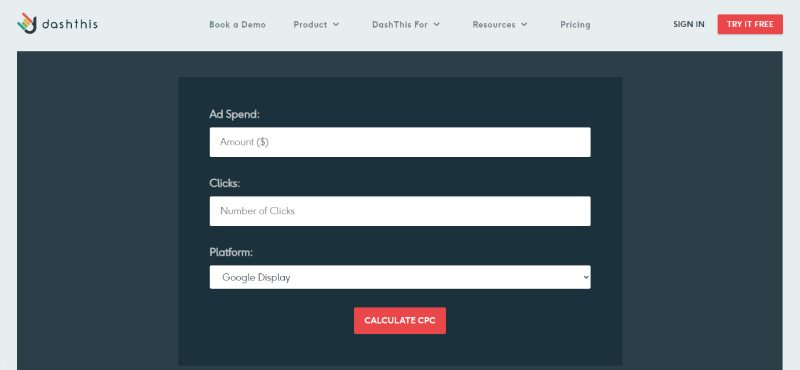
While online calculators offer helpful estimates, creating a customized Facebook ad cost calculator for your business will provide more accurate forecasts. By inputting data specific to your campaigns—such as target revenue, average conversion value, conversion rate, and CPC—you can calculate more precise ad spend and forecast potential returns.
Example calculation:
Suppose your target revenue is 1,000,000,000 VND, the average revenue per conversion is 200,000 VND, the conversion rate is 5%, and the CPC is 10,000 VND. You can calculate the required ad spend as follows:
- Number of conversions needed: 1,000,000,000 VND / 200,000 VND per conversion = 5,000 conversions.
- Number of clicks needed: 5,000 conversions / 0.05 conversion rate = 100,000 clicks.
- Total ad spend: 100,000 clicks × 10,000 VND CPC = 1,000,000,000 VND.
In this scenario, your ad spend matches your revenue, resulting in a 0% ROI.
Adjusting the CPC, conversion rate, or targeting strategies can help improve your ROI. By utilizing these tools and tailoring them to your business needs, you can gain better control over your ad budgets and optimize your campaigns, ultimately improving your Facebook advertising ROI.
How to Use the Facebook CPC Calculator Effectively
Using the Facebook ad campaign cost calculation tool can help you plan and optimize your advertising campaigns. Here’s how to use it effectively:
Step 1: Enter the required parameters into the tool
For example, if you want to run an ad campaign for a fashion store targeting women aged 25-35 in Manila, enter these details into the tool to predict costs.
The tool will ask for:
- Daily budget or total campaign budget.
- Target audience: age, gender, interests, location.
- Ad campaign duration.
- Industry competition level: high, medium, or low.
Step 2: Understand the results from the Facebook CPC Calculator
After entering the information, the tool will provide a Facebook ads cost estimation, showing the estimated CPC along with the expected number of clicks based on your set budget.
Example: With a $50 budget, the tool may estimate that you can get 1,000 clicks at a CPC of $0.05.
Step 3: Adjust your strategy and budget
- Refine target audience: If the CPC is too high, try narrowing or adjusting your audience to reduce costs.
- Experiment with different ads: Use A/B testing to compare different ad creatives and find the most effective ones.
How to Optimize Facebook Ads for Better CPC
Optimizing Facebook ads for a better CPC requires focusing on targeting, ad quality, and testing strategies. Here are detailed steps to help you reduce CPC while improving performance:
Target the Right Audience
- Use Facebook Audience Insights: This tool provides detailed information about your target audience, such as their age, gender, interests, behaviors, and even their online activity. By analyzing this data, you can refine your targeting to reach the most relevant people, leading to lower CPC.
Example: If your target audience is interested in skincare products and frequently searches for beauty-related content, you can create an audience segment specifically targeting people who have shown interest in beauty products. This focused targeting increases the likelihood of engagement, thus lowering the CPC.
- Refine Audience Segments: Instead of broad targeting, try narrowing your audience. For example, targeting women aged 25-35 who live in major cities and have shown interest in eco-friendly products may yield better results than a general “women” demographic.
Tip: Facebook’s detailed targeting options allow you to focus on specific actions like recent online shopping behaviors or people who follow similar brands. Fine-tuning this will ensure your ads reach the most relevant people at the lowest cost.

Create Engaging and Interactive Ads
- Clear and concise content: Your ad should communicate the message clearly with a compelling call to action (CTA). Avoid cluttered text or too many elements in one ad, as it could confuse the audience and reduce the chances of interaction. The simpler, the better.
- Attractive and relevant images: Using high-quality visuals that align with the interests and needs of your target audience can drive better engagement. Ensure your images are applicable to the ad content and attractive enough to make users stop scrolling.
Example: For an online language course, showcasing a learner confidently speaking in a new language or holding a certificate can be more engaging. The emotional appeal of personal achievement encourages users to take action, improving click-through rates.
- Strong Call to Action (CTA): Make sure the CTA is clear, such as “Shop Now,” “Learn More,” or “Sign Up,” depending on your goal. A compelling CTA directs users on what action to take and helps improve ad interaction.
A/B Testing for Optimal Results
- Conduct A/B Testing: A/B testing allows you to compare different ad versions to see which performs best, helping you identify what drives the lowest CPC. Test various elements like headlines, ad copy, images, and CTAs to determine which combination resonates most with your audience.
Example: Run a test comparing two ads: one with a product image showing the features and benefits of the product, and another with customer testimonials sharing success stories. By analyzing which ad gets more clicks for the same budget, you can choose the version that delivers a better CPC.
- Optimize ads based on data: Once you run your tests, use the data to optimize future campaigns. For instance, if the ad with customer testimonials yields a lower CPC, you can run more ads featuring real user experiences.
- Test ad placements: Experiment with different placements on Facebook, such as the News Feed, Stories, or the right-hand column. Some placements attract more clicks at a lower cost.
| To gain a deeper understanding of Facebook advertising costs, plan your budget efficiently, and optimize your CPC, contact NEMI Ads for expert advice and personalized support in improving your ad campaigns. |
FAQs
- How do you calculate CPC on Facebook?
To calculate CPC (Cost Per Click) on Facebook, use this formula:
CPC = Total Ad Spend / Number of Clicks
For example, if you spend $100 and get 1,000 clicks, your CPC will be $0.10. - Is $1000 enough for Facebook ads?
$1000 can be enough for Facebook ads, but the results depend on your targeting, industry, and goals. For smaller campaigns or businesses, $1000 can go a long way, while larger campaigns may need more to reach a wider audience. - How much does Facebook ads cost per 1,000 impressions?
The cost for 1,000 impressions (CPM – Cost Per Mille) can vary widely. On average, the cost ranges from $5 to $15, but it can be higher depending on your industry, targeting, and competition. - Is $5 a day enough for Facebook ads?
A daily budget of $5 can work for very small, niche campaigns, but it may limit your reach and performance. For better results, especially in competitive industries, a higher budget is typically recommended. It also depends on your goals and audience targeting.
The bottom line:
Optimizing your Facebook advertising costs requires a clear understanding of how to calculate CPC and the factors that influence it. Using the Facebook CPC Calculator alongside targeting strategies and testing can help you manage your budget effectively while improving ROI. Apply these tools and methods to turn your advertising campaigns into a competitive advantage for your business!
